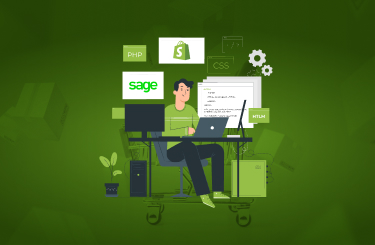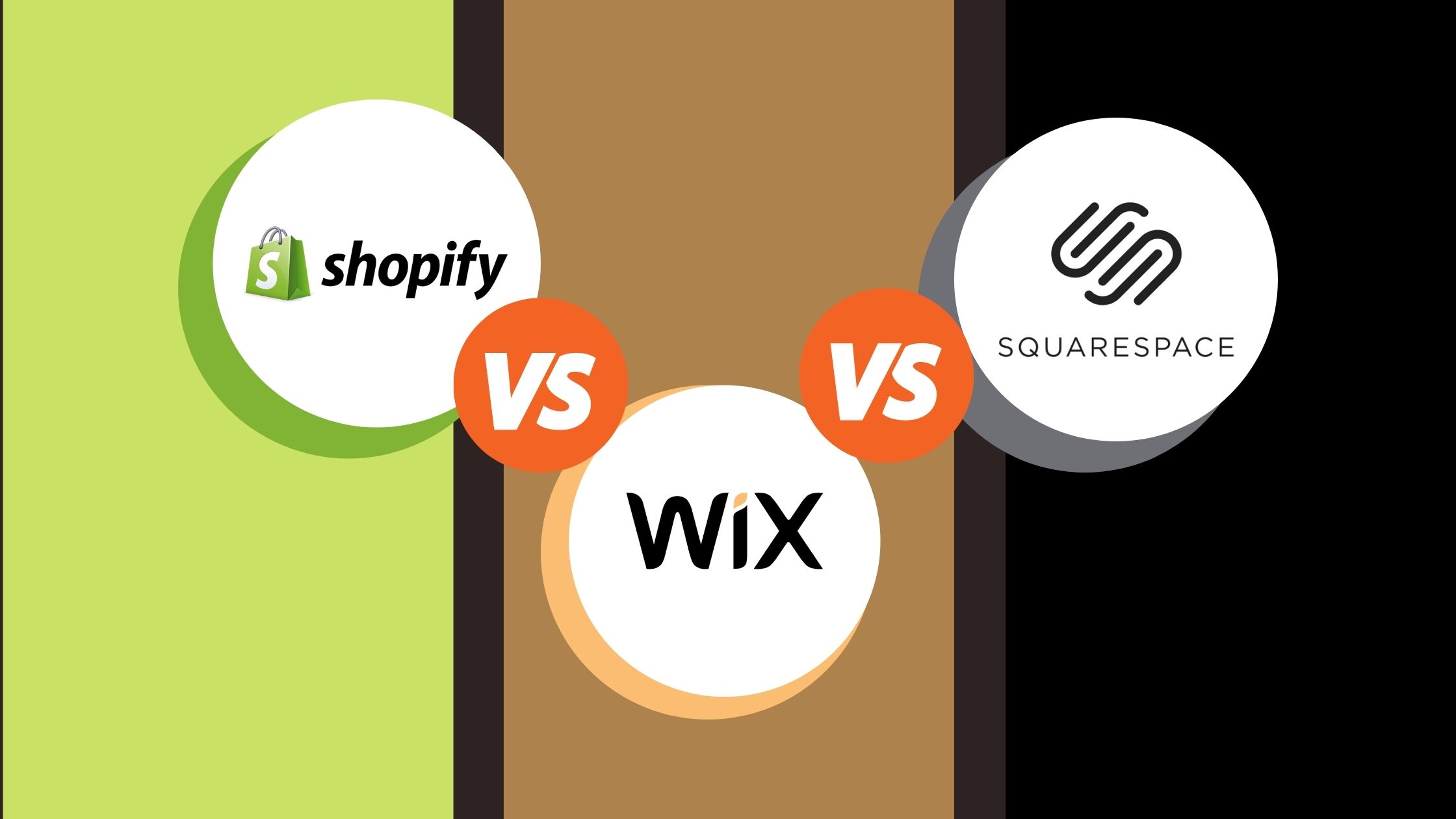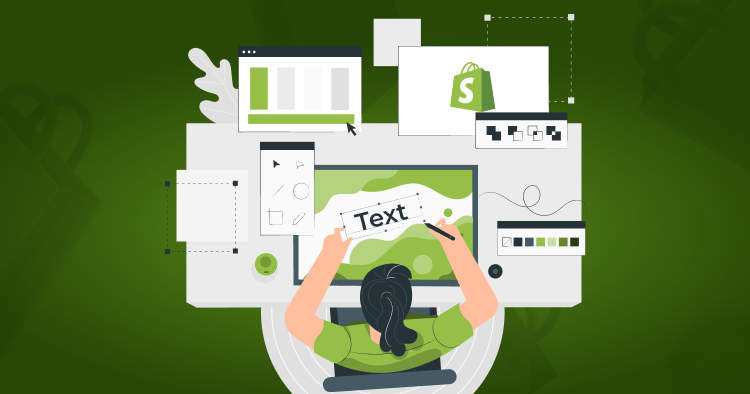The HubSpot Shopify integration has become essential for online retailers looking to scale their operations efficiently. By connecting these platforms, businesses gain access to comprehensive customer insights, automated marketing workflows, and streamlined sales processes that directly impact revenue growth.
This guide walks you through everything you need to know about integrating HubSpot with Shopify, from initial setup to advanced optimization strategies.
Summary
Integrating HubSpot with Shopify creates a unified system that transforms how you manage customer relationships and marketing campaigns. Here’s what you’ll discover in this guide:
- Step-by-step setup process for connecting your Shopify store to HubSpot CRM
- Key benefits include automated cart recovery, unified customer data, and advanced segmentation
- Data synchronization options for products, orders, and customer information
- Common integration challenges and practical solutions
- Best practices for maximizing ROI through marketing automation and personalized campaigns
Why Connect HubSpot and Shopify?
The Shopify HubSpot integration delivers measurable business outcomes by eliminating data silos between your ecommerce platform and CRM. According to industry research, businesses using integrated platforms see conversion rate improvements of up to 21% through automated cart recovery alone.
Unified Customer Intelligence
Your customers interact with your brand across multiple channels before making a purchase. They browse products, read blog posts, engage with email campaigns, and follow your social media accounts. Without integration, these touchpoints exist as disconnected data points.
Integrating hubspot with shopify automatically syncs customer profiles into a single view, providing:
- Complete purchase history and browsing behavior tracking
- Email engagement metrics and campaign interaction data
- Product preferences and viewing patterns
- Customer lifetime value calculations and predictive analytics
- Cross-channel touchpoint visibility for personalized outreach
Sales teams can see exactly which products a contact has viewed, what they’ve purchased previously, and how they’ve interacted with marketing campaigns. This comprehensive visibility enables more relevant conversations and personalized recommendations.
Automated Marketing Workflows
Cart abandonment affects nearly 70% of online shopping sessions. Manual follow-up simply isn’t scalable for growing businesses. The integration enables automated workflows that trigger based on specific customer actions.
When a customer adds items to their cart but doesn’t complete checkout, HubSpot automatically sends a personalized recovery email. These messages can include product images, remind customers why they were interested, and even offer time-sensitive incentives to encourage completion.
Beyond cart recovery, you can build workflows for post-purchase nurturing, product recommendations based on browsing history, win-back campaigns for inactive customers, and personalized reorder reminders for consumable products.
Enhanced Sales Pipeline Management
Orders from your Shopify store automatically create deals in HubSpot’s sales pipeline. This gives your sales team real-time visibility into ecommerce revenue without manual data entry.
Pipeline reports show how much revenue is pending, which products are selling best, seasonal trends, and customer lifetime value. Sales representatives can prioritize outreach based on purchase history and engagement scores automatically calculated by HubSpot.
For B2B merchants, this becomes particularly valuable. When wholesale customers place orders through your Shopify storefront, sales representatives immediately see the activity and can follow up proactively to ensure satisfaction or suggest complementary products.
Understanding the Integration Architecture
Before diving into setup, it’s helpful to understand how data flows between these platforms. The HubSpot integration with Shopify uses HubSpot’s official app available in both the HubSpot App Marketplace and Shopify App Store.
Data Synchronization Options
The integration offers flexible sync settings that determine which information flows between platforms and in which direction.
One-Way Sync
One-way sync transfers data from Shopify to HubSpot only. Products, orders, and customer information flow into HubSpot, creating a comprehensive view of ecommerce activity within your CRM. This approach works well for businesses primarily using HubSpot for marketing and reporting.
Two-Way Sync
Two-way sync allows bidirectional data flow. When you update customer information in HubSpot, those changes reflect in Shopify as well. This ensures consistency across both platforms and enables your team to work from either system while maintaining accurate data.
Most businesses start with one-way sync and graduate to two-way sync as their operations mature and data governance processes strengthen.
Object Mapping
The integration automatically maps Shopify data structures to HubSpot objects:
- Shopify customers become HubSpot contacts
- Shopify orders create HubSpot deals in your ecommerce pipeline
- Shopify products sync as HubSpot products for deal association
- Cart abandonment events trigger HubSpot tracking for workflow automation
Field mapping follows sensible defaults, pairing customer names, email addresses, phone numbers, and addresses between systems. For businesses with custom fields, HubSpot’s Operations Hub provides advanced mapping capabilities to ensure all relevant data syncs correctly.
Step-by-Step Setup Guide
Setting up the Shopify HubSpot integration requires administrative access to both platforms. The process typically takes 30-45 minutes, though initial data sync time varies based on your product catalog size and customer base.
Prerequisites and Requirements
Before beginning setup, verify you have the necessary permissions and subscriptions:
- HubSpot Access: Super Admin permissions or App Marketplace access required
- Shopify Access: Admin access to authorize connections and install tracking code
- Subscription Level: Any HubSpot tier supports basic integration; Operations Hub needed for custom field mapping
- Data Preparation: Review existing customer data for duplicates before integration
- Clean Data: Ensure quality data to prevent record matching issues
Installing the HubSpot Tracking Code
The tracking code enables HubSpot to identify visitors on your Shopify store and track their behavior for personalization and analytics.
HubSpot Configuration
Log into your HubSpot account and navigate to Settings via the gear icon. Select “Tracking & Analytics” from the left sidebar, then click “Tracking Code.” Copy the JavaScript snippet provided for your account.
Shopify Theme Integration
Access your Shopify admin dashboard and navigate to Online Store, then Themes. Click “Actions” on your active theme and select “Edit Code.” Locate the theme.liquid file in the Layout folder. Paste your HubSpot tracking code just before the closing </head> tag. Save your changes.
This code now tracks all visitor activity on your Shopify store, enabling form submissions, page views, and behavioral data to flow into HubSpot for segmentation and automation.
Connecting the Platforms
Open the HubSpot App Marketplace by clicking the marketplace icon in your portal’s top navigation. Search for “Shopify” and select the official HubSpot Shopify app from the results.
Click “Connect App” and enter your Shopify store URL when prompted. You’ll be redirected to Shopify to authorize the connection. Log into your Shopify account if needed and review the permissions HubSpot requests. These include access to customer data, orders, products, and inventory information.
Click “Install App” to authorize the integration. You’ll return to HubSpot where the connection confirmation appears. Navigate to Settings, then Integrations, and select “Connected Apps” to verify Shopify appears in your list of active integrations.
Configuring Sync Settings
With the connection established, configure how data syncs between platforms. Access your integration settings through the Connected Apps section, where you verified the installation.
Available Sync Objects
Click on Shopify to open the detailed settings panel. Select the “CRM Syncs” tab to view available objects for synchronization. You can sync contacts, products, and deals. Check each object you want to enable.
Contact Sync Preferences
For contact sync, decide whether to sync only contacts with email addresses. This reduces duplicate creation but may miss some customer records. Most businesses enable this filter for cleaner data.
Deal Configuration
Configure your deal creation preferences. Orders typically sync as deals in an “Ecommerce” pipeline that HubSpot creates automatically. You can customize deal stages to match your fulfillment process.
The initial sync begins automatically after configuration. Depending on your data volume, this process may take several hours. Historical data from Shopify imports first, then ongoing changes sync within 10 minutes.
Maximizing Integration Value
Simply connecting the platforms creates data flow, but strategic implementation unlocks the real business value. These practices help you extract maximum ROI from your HubSpot Shopify integration.
Building Effective Automation Workflows
Start with high-impact, low-complexity workflows that deliver immediate value. Cart abandonment recovery consistently produces the strongest ROI for most merchants.
Cart Abandonment Recovery
Create a new workflow in HubSpot triggered when the “Checkout Abandoned” event occurs for a contact. Set a 1-hour delay to give customers time to complete their purchase on their own. Then send a personalized email reminding them about items in their cart.
Include product images, prices, and a direct link back to their cart. Test different messaging approaches to find what resonates with your audience. Some merchants see success with helpful reminders, while others benefit from limited-time discount codes.
Multi-Touch Follow-Up Sequences
Extend this workflow with follow-up sequences. If the cart remains abandoned after the initial email, send a second message after 24 hours with a different angle. After three days, consider a final outreach with your strongest incentive.
Build similar workflows for post-purchase follow-up, review requests, and replenishment reminders for consumable products.
Advanced Customer Segmentation
The unified data from integrating hubspot with shopify enables sophisticated segmentation impossible with either platform alone. Create targeted lists that combine purchase behavior with marketing engagement.
High-Value Customer Identification
Identify high-value customers who have made multiple purchases and regularly open your emails. Build VIP campaigns that make these customers feel appreciated with:
- Early access to new products and exclusive launches
- Personalized product recommendations based on purchase history
- Special discount codes reserved for top customers
- Dedicated customer service contacts and priority support
- Invitations to exclusive events or virtual experiences
Behavioral Segmentation Strategies
Segment customers by product category purchases. Someone who buys running shoes might appreciate content about training plans or upcoming races. These behavioral segments enable relevance that generic campaigns can’t match.
Use recency, frequency, and monetary (RFM) analysis to categorize customers by engagement level. Recent high-frequency purchasers receive different messaging than customers whose last purchase was months ago.
Creating Ecommerce Dashboards
HubSpot automatically generates ecommerce reports after integration, but custom dashboards provide deeper insights into your specific business metrics.
Essential Dashboard Metrics
Build dashboards tracking:
- Revenue by product category and seasonal trends
- Average order value trends over time
- Customer acquisition cost compared to lifetime value
- Cart abandonment rates and recovery performance
- Channel attribution for marketing ROI
These reports help you understand which marketing channels drive the most valuable customers.
Cohort Analysis and Retention
Monitor cohort analysis to see how customer groups behave over time. First-time buyers from specific campaigns may show different retention patterns than organic customers or referrals.
Combine ecommerce metrics with marketing performance data. Connect revenue directly to campaigns, content pieces, and channels to calculate true marketing ROI.
Common Challenges and Solutions
While the Shopify HubSpot integration is relatively straightforward, businesses occasionally encounter obstacles during implementation or ongoing use.
Data Quality and Deduplication
Contact deduplication becomes critical when multiple data sources feed HubSpot. If customers place orders as guests using different email addresses, or if they’re already in HubSpot from previous marketing activities, duplicate records can emerge.
Preventing Duplicates
HubSpot’s deduplication settings help manage this automatically by matching contacts based on email addresses. During initial sync configuration, enable the option to sync only contacts with email addresses. This dramatically reduces duplicate creation.
Managing Existing Duplicates
For existing duplicates, use HubSpot’s duplicate management tools to merge records while preserving all historical data from both sources. Regular duplicate audits should become part of your data maintenance routine.
Sync Timing and Delays
The integration syncs data near real-time, with most changes appearing in HubSpot within 10 minutes. However, during high-traffic periods or if dealing with large data volumes, delays can occur.
These delays rarely impact practical operations since most automation workflows include built-in timing delays anyway. Cart abandonment emails typically wait at least an hour before sending, allowing plenty of time for order data to sync.
If you notice consistent sync delays affecting time-sensitive operations, contact HubSpot support to investigate potential technical issues with your specific account.
Limited Native Sync Options
HubSpot’s standard integration handles core data objects well but doesn’t natively sync every Shopify data point. Refund information, discount codes, and some custom metafields may not transfer automatically.
When to Use Middleware Solutions
For businesses requiring additional data synchronization, consider middleware solutions or custom API integrations. Third-party integration platforms can bridge these gaps, though they typically require ongoing subscription costs.
Evaluate whether these advanced data needs justify the additional complexity and expense. Many businesses find the standard integration sufficient for their requirements.
Custom vs. Standard Integration Approaches
The native HubSpot integration with Shopify serves most small to medium-sized businesses effectively. However, enterprises or businesses with complex requirements may benefit from custom integration development.
When Standard Integration Works Best
If your needs include basic customer data sync, order tracking in HubSpot deals, automated marketing based on purchase behavior, and standard reporting on ecommerce metrics, the native integration handles these requirements excellently.
Standard Integration Benefits
The standard approach offers several advantages:
- No technical knowledge required for setup
- Implementation completed within hours
- Ongoing maintenance handled by HubSpot
- No additional costs beyond existing subscriptions
- Regular updates and feature improvements
Scenarios Requiring Custom Solutions
Custom integrations become necessary when you need bidirectional sync of custom fields not included in standard mapping, integration with additional systems beyond Shopify and HubSpot, complex business logic for data transformations, or real-time sync requirements faster than the standard 10-minute interval.
Custom Development Considerations
Custom development requires significant investment in both initial build costs and ongoing maintenance. Only pursue this path when standard integration limitations directly impact critical business operations.
Measuring Integration Success
Track specific metrics to evaluate whether your Shopify HubSpot integration delivers expected business value.
Key Performance Indicators
Monitor these essential metrics to gauge integration effectiveness:
Cart Recovery Metrics
Track cart recovery rate to measure how effectively automation converts abandoned carts into completed purchases. Calculate this by dividing recovered orders by total abandoned carts.
Email Engagement Performance
Track email engagement rates for automated workflows compared to manual campaigns. Integration-powered personalization typically shows 2-3x higher open and click rates.
Order Value Analysis
Measure average order value for customers who engage with personalized content versus those receiving generic communications. The integrated data should enable more relevant product recommendations that increase basket size.
Customer Lifetime Value
Calculate customer lifetime value for segments created using integrated data. Highly targeted nurturing campaigns should increase repeat purchase rates and overall customer value.
ROI Calculation
Compare the time saved through automation against the cost of your HubSpot and Shopify subscriptions. For most businesses, the integration pays for itself within the first quarter through reduced manual work and increased conversion rates.
Revenue Attribution
Quantify revenue from cart recovery campaigns specifically attributable to the integration:
- Track recovered cart values month over month
- Calculate conversion rates for automated email sequences
- Compare revenue per email for automated vs. manual campaigns
- Measure incremental revenue from personalized product recommendations
- Monitor customer retention rates for segmented nurture campaigns
Even modest recovery rates typically generate thousands in monthly revenue for established stores.
Key Takeaways
The HubSpot Shopify integration creates a powerful unified system that transforms disconnected data into actionable customer intelligence. Successful implementation requires proper setup, strategic workflow development, and ongoing optimization based on performance metrics. Businesses that invest in learning both platforms maximize value through sophisticated segmentation and personalization. While challenges like data deduplication and sync timing require attention, the benefits far outweigh implementation efforts for most ecommerce operations.
Conclusion
Integrating HubSpot with Shopify eliminates data silos, enables sophisticated automation, and provides the customer intelligence needed to compete in today’s online marketplace. Start with core automation workflows like cart recovery, then gradually expand to more advanced strategies as your team gains experience.
Ready to unlock the full potential of your ecommerce store? Book a consultation to discuss your HubSpot Shopify integration requirements.
Frequently Asked Questions
Does HubSpot Work with Shopify?
Yes, HubSpot offers a native integration available for free in both the HubSpot App Marketplace and the Shopify App Store.
How Much Does the HubSpot Shopify Integration Cost?
The basic integration is free with any HubSpot and Shopify subscription. Custom field mapping requires HubSpot’s Operations Hub Starter or higher.
Can I Sync Historical Data from Shopify to HubSpot?
Yes, the integration automatically imports all historical customer and order data during initial sync.
What Happens If I Disconnect the Integration?
Disconnecting stops new data syncing, but existing data in HubSpot remains intact.
How Often Does Data Sync Between Shopify and HubSpot?
Changes sync within 10 minutes under normal conditions after the initial historical sync completes.
Can I Customize Which Data Fields Sync?
Yes, but custom field mapping requires HubSpot’s Operations Hub Starter or higher.
Does the Integration Support Multiple Shopify Stores?
Yes, you can connect multiple Shopify stores to a single HubSpot account with separate configurations for each.



